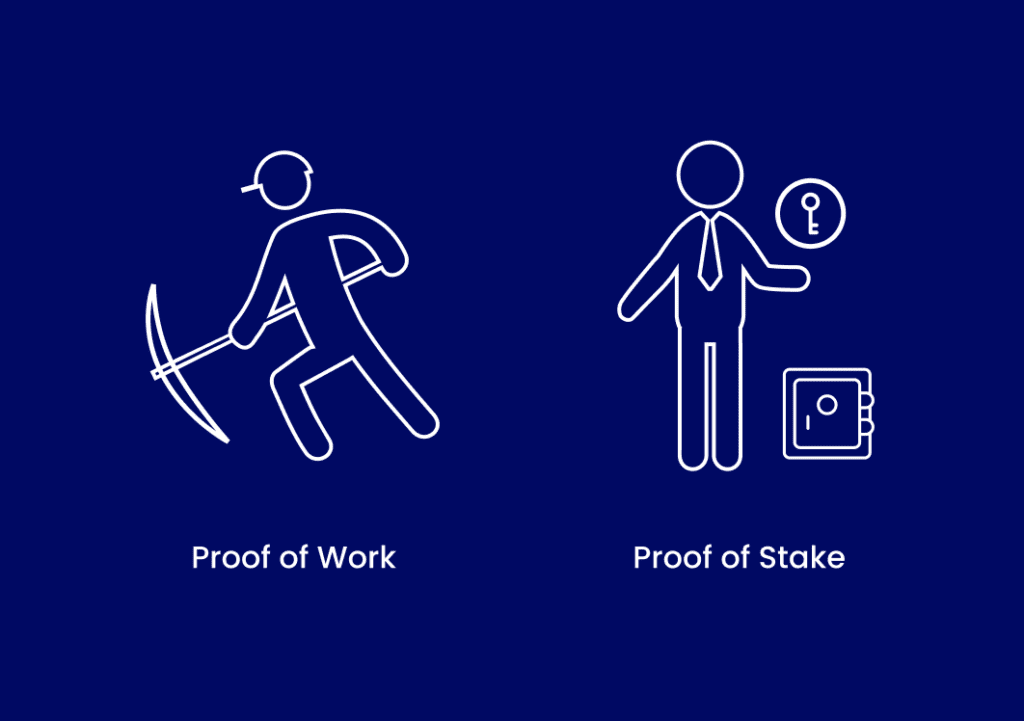Key Points:
- Although Bitcoin is simply one cryptocurrency, Ethereum is a smart-contract platform for decentralized applications that has a large number of projects.
- Bitcoin is an open-source project, and its evolution is dependent on community decisions.
- The maintainers, who own the bulk of BTC, may follow Ethereum’s lead and move, but they are a cautious lot.
The world’s second most popular cryptocurrency blockchain, Ethereum, is switching to proof of stake (PoS), an energy-efficient architecture for adding new blocks containing transactions, NFTs, and metadata to additional information on the blockchain.
When Ethereum finished its update last September, it was referred to as “The Merge,” the union will immediately lower energy consumption by 99%.
Bitcoin mining, the computationally difficult process of creating new Bitcoins, has become a global problem. Miners are searching for additional inexpensive, but not necessarily green, sources of electricity worldwide once China cracks down on the process in mid-2021.

Miners in Kazakhstan have strained the grid, which is highly reliant on carbon-intensive coal-fired power facilities, resulting in local blackouts and public unrest.
Locals in upstate New York have complained about skyrocketing energy costs and high-frequency buzzing after mining companies took over defunct factories and derelict buildings. While data center supporters are concerned that mining hurts the environment, the United States houses over 38% of BTC mining operations.
A Bitcoin transaction consumes the same energy an American home consumes in nearly a month. The Bitcoin community has been staunchly opposed to the shift in the past. Still, pressure from authorities and environmentalists fed up with Bitcoin’s large carbon footprint may push them to reconsider on the subject.
The question is, why doesn’t Bitcoin follow the PoS path like Ethereum? Let Coincu comment on this based on the following points:
Proof of Stake vs. Proof of Work
Cryptocurrencies, unlike banks, do not have a central guardian maintaining their public record; instead, every transaction on the blockchain is shared on-chain. To agree on updates, they instead rely on consensus processes.
With the proof-of-work mechanism used by Bitcoin, a worldwide network of computers known as “miners” uses power in order to be paid with Bitcoin, and whoever solves the cryptographic problem first gets to add the next block, as well as earn fresh bitcoins.
The likelihood of acquiring Bitcoin is directly proportionate to the miner’s computational capacity (the more computing power, the greater the chance of receiving rewards, that is, the more mining machines, the greater the probability of obtaining Bitcoin rewards). As a result, there are a vast number of bitcoin network nodes all around the world, all competing for bitcoin rewards.

The proof-of-stake approach that Ethereum presently employs eliminates the large-scale energy usage of proof-of-work. The stake verification mechanism employs a large number of “validators” rather than miners.
To become a validator, you must first deposit or “stake” a particular quantity of tokens – in the instance of Ethereum, 32 ETH. The stake verification mechanism allows validators to review new transaction blocks and add them to the blockchain to earn rewards on their staked tokens. The more coins you stake, the more likely you are to be chosen to add the next block of transactions to the chain.
Both systems are attempting to achieve the same aim; however, one system (BTC) uses a country’s power, and the other (ETH) merely requires players to stake tokens. In principle, both are decentralized, but not in actuality. The five biggest mining pools now perform the majority of Bitcoin mining; with proof-of-stake (PoS), those possessing the majority of coins control the blockchain.
Ethereum has a variety of applications, Bitcoin is just a cryptocurrency
Bitcoin is nothing more than a cryptocurrency. It has two groups: developers and miners. But, Ethereum is a smart contract platform for decentralized applications, and it is the foundation for numerous projects, cryptocurrencies, NFTs, and NFT platforms.
Vitalik Buterin, the developer of Ethereum, has consistently advocated for the adoption of Proof of Stake. Buterin felt that establishing a proof-of-stake to enable a meaningful decentralized system was “extremely important”—he previously said that some claimed it was impossible—he decided to construct Ethereum using Proof of Work, and while he progressively addressed the problem, Proof of Stake took 7 years.
Numerous significant Ethereum projects, including cryptocurrency exchange Coinbase, stablecoin firms Circle and Tether, and NFT projects Yuga Labs and OpenSea, have publicly backed Ethereum’s transition to proof-of-stake.

It has a number of advantages over Proof of Work. Apart from the benefits of being more environmentally friendly, network transaction fees will be decreased. These initiatives paved the path for Ethereum’s migration. Before the Ethereum Foundation, the foundation that helps manage the network clicked the red button, and the war was won.
There is always the possibility that Ethereum miners may develop rival chains and continue to use proof-of-work versions. Any existing smart contracts, tokens, and NFTs on the current chain will be “forked” or copied to the old chain. However, despite various efforts to establish a rival version of Ethereum, none of these initiatives achieved traction, and the proof-of-stake version prevailed.
The split of the Bitcoin community
In principle, a small group of people could take control and convert Bitcoins to proof-of-stake. Since it is an open-source project, Bitcoin’s development relies on decisions being made by the community, which theoretically includes anyone who wants to participate.
But updates to BTC’s code are actually controlled by a small core team of developers called “maintainers,” whose salaries are privately funded by influential groups such as Bitcoin startup Blockstream; the largest cryptocurrency exchange in the United States, Coinbase; and MIT Digital Currency Initiative, a research project hosted by the MIT Media Lab.
These maintainers can switch like Ethereum, but they are a conservative bunch. Bitcoin is the original proof-of-work cryptocurrency. While Bitcoin’s code has been tweaked and updated all the time, it was barely changed from its original vision in 2009.
While there are no barriers to Bitcoin switching to PoS, the core maintainers cannot do so alone. They require the assistance of miners, who presently earn 900 new Bitcoins every day (worth over $20 million) in addition to transaction fees for the new blocks they mine.
Faced with the prospect of abandoning that economic model, miners would most likely try to keep a proof-of-work branch of the coin alive, insisting that they are the actual Bitcoin and that the proof-of-stake branch is simply another shitcoin. Jorge Stolfi, a computer science professor at the Brazil’s State University of Campinas, explains.
The war between a new proof-of-stake branch and the “conventional” proof-of-work branch, according to Stolfi, would be decided by how the Bitcoin price is divided between the two currencies. And that is significantly dependent on marketing.
Conclusion
The development path of Bitcoin can be affirmed as history from its launch in 2009 to the present. However, its improvement process completely depends on the community and its practical application.
It is not certain if Bitcoin’s transition to PoS is more available, but the process is still a long way off.
DISCLAIMER: The Information on this website is provided as general market commentary and does not constitute investment advice. We encourage you to do your own research before investing.
Join us to keep track of news: https://linktr.ee/coincu
Harold
Coincu News






















